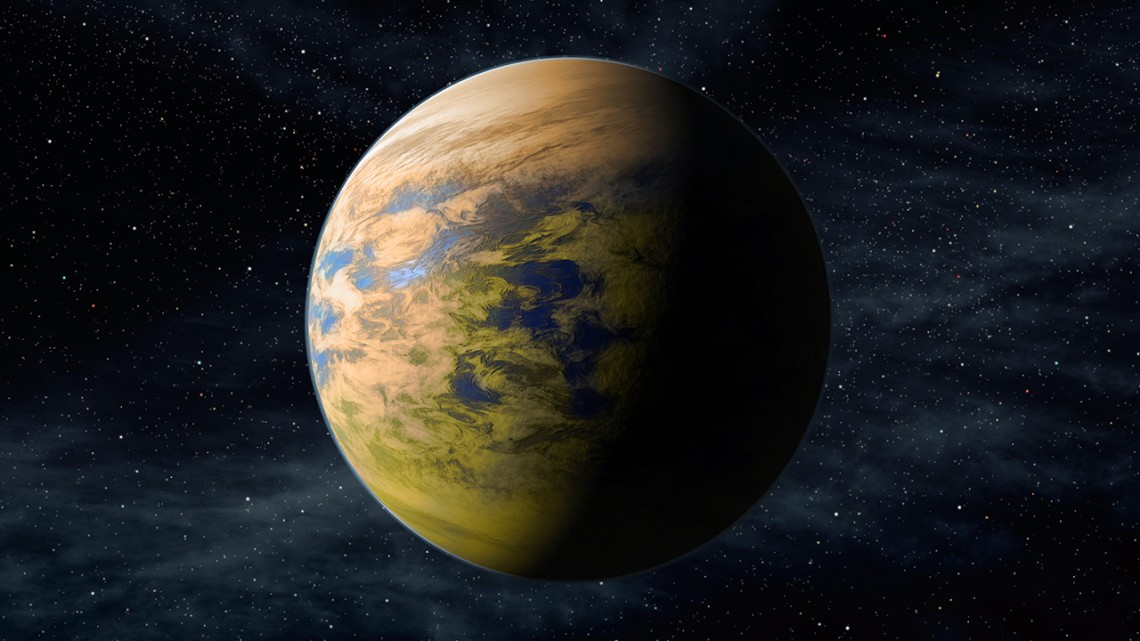Doom-spiraling exoplanet will someday meet fiery demise

Like a golf ball circling a hole, the planet Kepler-1658b is getting closer and closer to falling in — into its star, that is.
Scientists observing the exoplanet have noticed its orbital period around its mature or "evolved" parent star is shrinking over time, indicating that the planets inching closer to a fatal collision with its star.
"We've previously detected evidence for exoplanets inspiraling toward their stars, but we have never before seen such a planet around an evolved star," Shreyas Vissapragada, an exoplanet scientist at the Harvard and Smithsonian Center for Astrophysics and co-author of a new study on the observations, said in a statement.
Related: Last light: Here's the final view from NASA's planet-hunting Kepler Space Telescope
It's rather difficult to determine the orbital decay of exoplanets. The process is quite slow, as astronomers must wait to see many transits of an exoplanet in front of its star. As a planet transits its star, the star appears to dim from the perspective of Earth; astronomers observing repeated transits can track that dimming to reconstruct the distant planet's activities, including its orbital period. Fortunately for Vissapragada and his colleagues, Kepler-1658b has an incredibly short orbital period of 3.8 days, so transits happen frequently.
Kepler-1658b is considered a "hot Jupiter," or an exoplanet with a similar mass and size as Jupiter, but a far hotter temperature due to its close proximity to its star. It was first spotted by NASA's retired exoplanet-hunter Kepler Space Telescope in 2009, but was not confirmed to be an exoplanet until 2019.
Still, scientists have been continuously observing the exoplanet since Kepler spotted it, first using Kepler, then the Palomar Observatory's Hale Telescope in California, then NASA's Transiting Exoplanet Survey Telescope (TESS) that launched in 2018 to carry on the work of finding distant planets. During those 13 years, the trio of instruments has recorded a steady decrease in Kepler-1658b's orbital period: 131 milliseconds per year.
Breaking space news, the latest updates on rocket launches, skywatching events and more!
Vissapragada and his colleagues now theorize that the orbital decay is caused by tidal interactions between the exoplanet and its star — the same type of interaction that affects the relationship between Earth and the moon. In our case, however, the Earth and the moon are becoming more distant due to tidal interactions. In the case of Kepler-1658b, the exoplanet is getting closer to its star.
"Now that we have evidence of inspiraling of a planet around an evolved star, we can really start to refine our models of tidal physics," Vissapragada said. "The Kepler-1658 system can serve as a celestial laboratory in this way for years to come, and with any luck, there will soon be many more of these labs."
The research is described in a paper published Monday (Dec. 19) in the Astrophysical Journal Letters.
Follow Stefanie Waldek on Twitter @StefanieWaldek. Follow us on Twitter @Spacedotcom and on Facebook.

Space.com contributing writer Stefanie Waldek is a self-taught space nerd and aviation geek who is passionate about all things spaceflight and astronomy. With a background in travel and design journalism, as well as a Bachelor of Arts degree from New York University, she specializes in the budding space tourism industry and Earth-based astrotourism. In her free time, you can find her watching rocket launches or looking up at the stars, wondering what is out there. Learn more about her work at www.stefaniewaldek.com.
